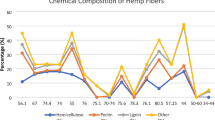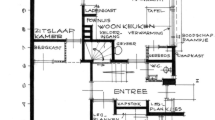Abstract
The Heritage Buildings are the evidences of our history and culture, by passing the time these evidences are fading day by day, the neglecting behavior toward heritage showcase our interest in our culture and history. Some recent conservation work in the region give relief to this heart burnt scenario. Some heritage buildings and sites are declared as World heritage Site by UNESCO. But unfortunately, there are many heritage sites which are still ignored. Masjid Mahabat Khan Peshawar, KPK Pakistan is the most glorious heritage of the region. The condition of the Mosque is very carious, this research work is completely revolving around the conservation of this glorious mosque. Including the current condition statement of the building, numbers of required repair works, and conservation techniques. Conservation is a long reviving process with professional management and supervision attitude. Management and proper work frame is the main key of positive conservation. The conservation process is briefly discussed with respect to many aspects. It is advised that before starting the conservation process make sure the availability of local craftsmen, once the conservation work starts there should be zero break during all the process. Highlight the sensitive deteriorated part of the building to management panel, if it is hard to conserve or need reconstruction, the panel will sort out an alternative solution. The most important part in implementation phase is; Properties and composition of conserving materials. The bond between new and old material need to be strong and flexible, avoid the extra strength solutions in conservation, by executing hard or strengthen material in conservation process the thermal expansion and contraction in building is highly effected. The materials with same properties and composition take the thermal effect in a balanced way.




















Similar content being viewed by others
Data availability
Data will be provided upon demand.
References
Bivar A (1964) (M.) Wheeler Chārsada: a metropolis of the North-West frontier; being a report on the excavations of 1958. London: Oxford University Press for the Government of Pakistan and the British Academy 1962, pp xii+ 130, 45 plates, 52 text figures.£ 3 3s. J Hell Stud 84:215–216. https://doi.org/10.2307/627773
Bukhari MF (2008) The lotus in the Buddhist art of Pakistan. Anc Sindh 10:66
Hinkley M (2001) Some Terracotta Figurines from the Peshawar Plain. Anc Pak 14:19–33
Baumann G (2002) The multicultural riddle: rethinking national, ethnic and religious identities. Routledge
Szreter S (2007) The right of registration: development, identity registration, and social security—a historical perspective. World Dev 35(1):67–86
MacRury I, Poynter G (2010) ‘Team GB’and London 2012: The paradox of national and global identities. Int J Hist Sport 27(16–18):2958–2975
Strauss A (1995) Identity, biography, history, and symbolic representations. Soc Psychol Q 58(1):4–12
Kumar K (2006) English and French national identity: comparisons and contrasts. Nations Nationalism 12(3):413–432
Cañizares-Esguerra J (2001) How to write the history of the New World: histories, epistemologies, and identities in the eighteenth-century Atlantic world. Stanford University Press
Banks JA (2021) Diversity, group identity, and citizenship education in a global age. Handbuch Bildungs-und Erziehungssoziologie. Springer, pp 1–24
Radanovic M, Khoshelham K, Fraser C (2020) Geometric accuracy and semantic richness in heritage BIM: A review. Digit Appl Archaeol Cult Herit 19:e00166
López FJ et al (2017) A framework for using point cloud data of heritage buildings toward geometry modeling in a BIM context: A case study on Santa Maria La Real De Mave Church. Int J Archit Herit 11(7):965–986
Yang X et al (2020) Review of built heritage modelling: Integration of HBIM and other information techniques. J Cult Herit 46:350–360
Rocha G et al (2020) A scan-to-BIM methodology applied to heritage buildings. Heritage 3(1):47–67
Shah I (1994) Jāmi’masjid Andarshahr commonly known as" Masjid Mahābat Khān": The question of attribution. Islam Stud 33(4):497–500
Ahmad T (1993) Masjid Mahabat Khan. Anc Pak 7:145–149
Shah I (1997) The Mahabat Khan Mosque: Historical Perspective. J Pak Hist Soc 45(3):315–324
Shah I, Sehrai N (2001) A Short Survey of Stucco Decoration in the Mahābat Khān Mosque, Peshāwar. Anc Pak 14:9–18
Shah I (2002) The'Idgah at Peshawar: history and architecture
Shah I (2002) The ‘Īdgāh at Peshāwar: History and Architecture. Anc Pak 15:15–20
Kaleem I, Khan MM, Syed MA (2020) Religious Tourism: A key sector for Pakistan’s Socio-Economic Growth. Peshawar Islamicus 11(2):1–10
Shah I (1999) The Mahabat Khan mosque: a comparative study. J Pak Hist Soc 47(4):97
Ahmad T (1993) Masjid Mahābat Khān. Anc Pak 8:145–147
Tillotson G (2006) Architecture and Identity in Three Indian States, in Islamic Art in the 19th Century. Brill. p. 387–408
Sultana R (2012) A Profile of the New Discoveries of Durrani Monuments in Khyber Pakhtunkhwa, Pakistan. J Asian Civilizations 35(2):65
Khan G (2020) "Shāh Jahān-Nāmā." Exploring medieval India through Persian sources, p 23
Jahan S (1592) Shah Jahan-Shah Jahan
Bokhari SHAS (1995) A monument of concern. J Cent Asia. 18:73
Qureshi S (n.d.) Mahabat Khan Mosque-An islamic symbol of peace, vol 20. Department of Architecture & Planning, NED University of Engineering & Technology, City Campus Maulana Din Muhammad Wafai Road, Karachi, pp 2519–5050
Acknowledgements
The authors thanks to Editor, reviewers and entire journal team members.
Author information
Authors and Affiliations
Corresponding author
Ethics declarations
Conflict of interests
The Authors has no conflict of interests regarding this manuscript.
Rights and permissions
Springer Nature or its licensor (e.g. a society or other partner) holds exclusive rights to this article under a publishing agreement with the author(s) or other rightsholder(s); author self-archiving of the accepted manuscript version of this article is solely governed by the terms of such publishing agreement and applicable law.
About this article
Cite this article
Rehman, I.U. The critical issues in the conservation of Heritage building: Masjid Mahabat Khan Peshawar, Pakistan. Archit. Struct. Constr. (2024). https://doi.org/10.1007/s44150-024-00110-6
Received:
Accepted:
Published:
DOI: https://doi.org/10.1007/s44150-024-00110-6




